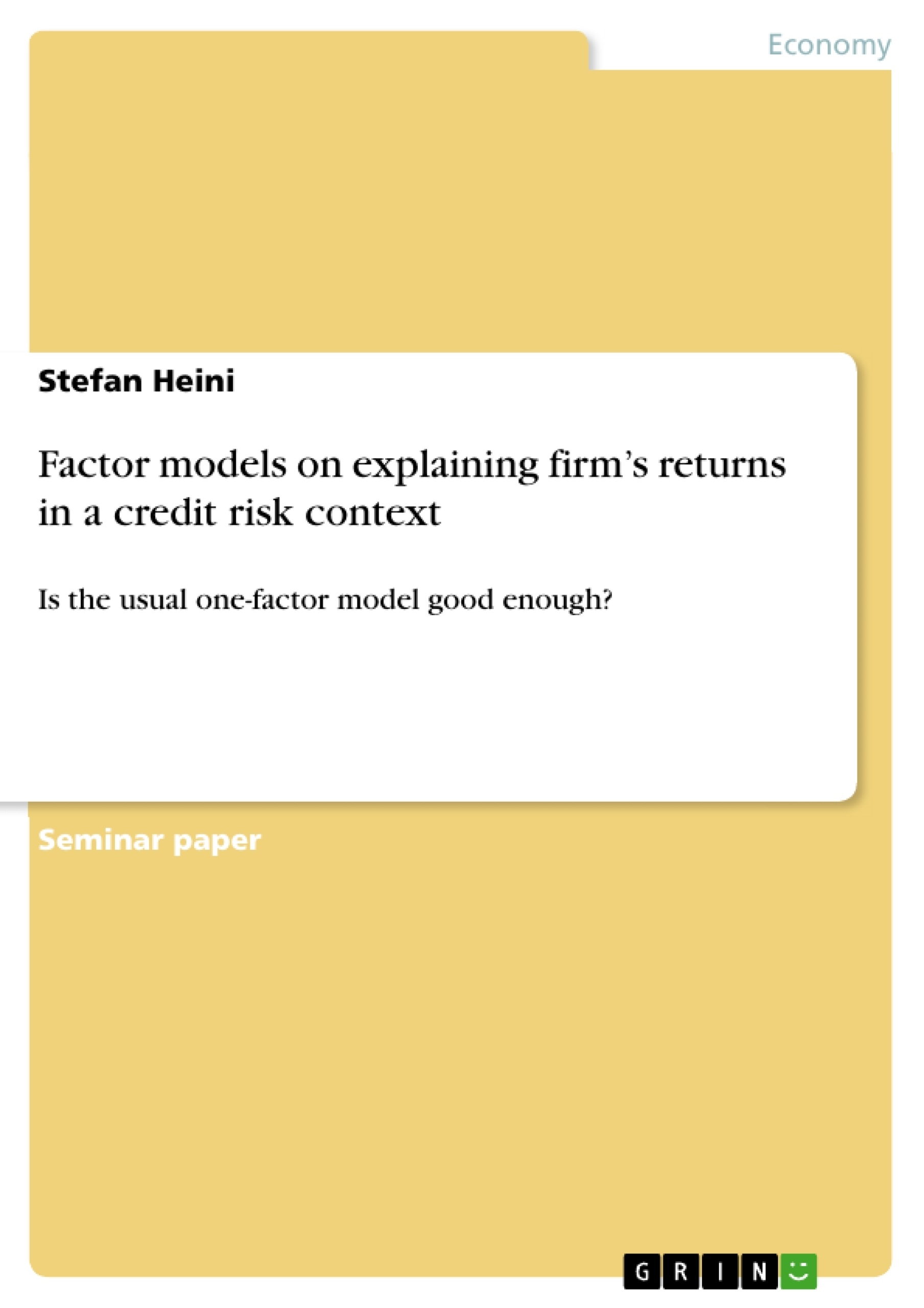Scientists use factor models to try to understand the relationship between risk and asset returns and to make estimations of the likely development of the returns in the future (Sharpe 2001, p.1). Today, two of the most renowned factor models to estimate expected returns of an asset or a firm are the Capital Asset Pricing Model (CAPM), introduced by Treynor (1962), Sharpe (1964), Lintner (1965) and Mossin (1966), and the three-factor model of Fama and French of 1992 (Bartholdy and Peare 2004, p.408). While the CAPM claims the existence of a positive linear relationship between the volatility/risk (market beta) and expected returns (Bali and Cakici 2004, p.57), Fama and French state that their three-factor model (3FM) has an improved performance in estimating returns as – so they claim – size and book-to-market equity have significant predictive power, too (Fama and French 1992, p.427).
Inhaltsverzeichnis (Table of Contents)
- Introduction
- The CAPM
- CAPM-Empirical Evidence
- CAPM Criticism
- The three-factor-model
- The three-factor model - Empirical Evidence
- The three-factor model - Criticism
- Other models
- Summary of theory
- Statistical analysis
- Methodology
- Results
- Conclusion
Zielsetzung und Themenschwerpunkte (Objectives and Key Themes)
This paper aims to assess the effectiveness of different factor models in explaining firm returns within a credit risk context. The paper critically examines the strengths and weaknesses of the Capital Asset Pricing Model (CAPM) and the three-factor model of Fama and French. The main objective is to determine whether the traditional one-factor model is sufficient or if more sophisticated models are necessary to accurately predict firm returns.Key themes explored in this work include:
- The relationship between risk and asset returns
- The limitations of the CAPM in explaining firm returns
- The role of size and book-to-market equity in predicting returns
- The empirical evidence supporting and challenging different factor models
- The implications of factor models for investors and portfolio management
Zusammenfassung der Kapitel (Chapter Summaries)
The introduction sets the stage by explaining the use of factor models in understanding the relationship between risk and asset returns. The paper introduces the two prominent models, the CAPM and the three-factor model, and highlights their key differences in predicting returns.Chapter two delves into the CAPM, explaining its theoretical foundation and how it predicts a positive linear relationship between risk (market beta) and expected returns. The chapter examines the empirical evidence that supports and challenges the CAPM's claims, including studies by Black, Jensen, Scholes, and Fama and MacBeth.
Chapter three focuses on the three-factor model of Fama and French, emphasizing its improved performance in predicting returns compared to the CAPM. The chapter outlines the inclusion of size and book-to-market equity as significant predictive factors. It also explores the empirical evidence supporting the three-factor model and critiques its limitations.
Chapter four briefly discusses other factor models beyond the CAPM and the three-factor model, acknowledging the growing complexity and diversity in the field of factor modeling.
Chapter five provides a comprehensive summary of the theoretical concepts and empirical findings presented in the preceding chapters, laying the groundwork for the subsequent analysis and conclusions.
Schlüsselwörter (Keywords)
This paper focuses on factor models, specifically the CAPM and the three-factor model, to explain firm returns in a credit risk context. Key concepts explored include risk and return, market beta, size effect, book-to-market equity, empirical evidence, and model criticism. The paper examines the applicability and limitations of these models in predicting firm returns and their implications for investors and portfolio management.- Citation du texte
- Master of Arts UZH Stefan Heini (Auteur), 2012, Factor models on explaining firm’s returns in a credit risk context, Munich, GRIN Verlag, https://www.grin.com/document/272034



